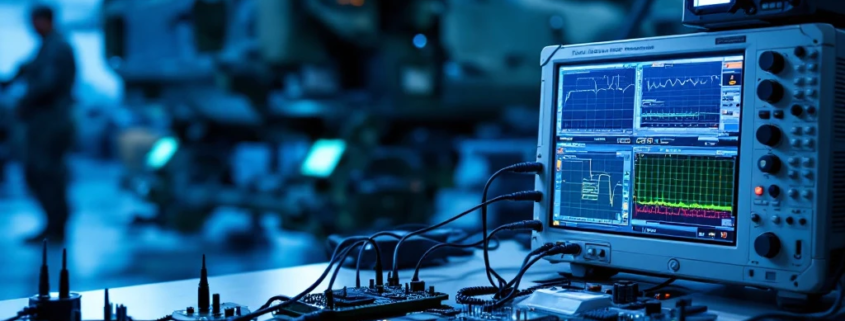What Role Does Testing Play in Defence System Reliability?
Comprehensive testing forms the backbone of dependable defence systems, serving as the critical quality assurance process that determines operational readiness under extreme conditions. Defence system testing involves systematic evaluation protocols designed to verify functionality, durability, and performance against specified requirements before deployment in high-stakes military environments. This rigorous verification process ensures systems perform reliably when national security and human lives depend on flawless operation, preventing catastrophic failures through methodical identification and elimination of potential vulnerabilities.
What role does testing play in defence system reliability?
The connection between thorough testing and reliable defence systems cannot be overstated. Defence equipment operates in environments where failure isn’t merely inconvenient—it can be catastrophic, potentially compromising military operations, endangering personnel, and threatening national security objectives. Unlike commercial software, where bugs might cause financial losses or user frustration, defence system failures can lead to loss of life.
Defence system testing encompasses comprehensive evaluation procedures designed to simulate extreme operational conditions, verify functionality against technical specifications, and validate system performance under stress. This process identifies potential points of failure before systems are deployed to the field, where repairs or adjustments become exponentially more difficult and dangerous.
The validation process for military and defence technologies involves far more rigorous standards than conventional software testing. Systems must demonstrate resilience against not just standard operational scenarios but also against deliberate attacks, extreme environmental conditions, electromagnetic interference, and component degradation over time.
How are defence systems tested for reliability?
Defence systems undergo multiple specialized testing methodologies to ensure their reliability in diverse operational environments. Each method targets specific potential failure modes and collectively creates a comprehensive validation framework.
Environmental stress screening represents a fundamental approach to reliability validation. This methodology subjects hardware components to extreme temperature variations, humidity levels, vibration, and shock to identify weaknesses that might only emerge under harsh conditions. Systems deployed on naval vessels, for instance, must withstand salt spray, constant vibration, and temperature fluctuations—conditions that can be systematically replicated in controlled testing environments.
Accelerated life testing compresses years of operational wear into manageable testing periods. By exposing systems to intensified stress levels, engineers can predict long-term reliability without waiting for natural degradation processes. This approach helps identify components likely to fail after extended use, allowing for design adjustments before deployment.
Electromagnetic compatibility testing has become increasingly crucial as defence systems incorporate more electronic components. This methodology ensures systems continue functioning correctly despite electromagnetic interference from other equipment or deliberate jamming attempts. Systems must demonstrate both immunity to external electromagnetic influences and compliance with regulations limiting their own emissions.
Cyber resilience validation has emerged as a critical testing domain as defence systems become more networked. These protocols assess resistance to cyber attacks, ensuring that command and control systems remain secure against increasingly sophisticated threats. Penetration testing and code analysis help identify vulnerabilities before adversaries can exploit them.
Why is standardized testing crucial for defence systems?
Standardized testing protocols form the foundation for reliable defence capabilities across different platforms, manufacturers, and national forces. These established frameworks ensure consistent evaluation regardless of where or by whom systems are developed.
Military standards (MIL-STD) provide precise specifications for testing procedures across all aspects of defence system performance. For example, MIL-STD-810 details environmental testing protocols, while MIL-STD-461 governs electromagnetic compatibility requirements. These standards ensure that all systems undergo equivalent validation, regardless of manufacturer, creating a baseline for acceptable performance.
International testing protocols further strengthen defence reliability by enabling interoperability between systems developed in different countries. NATO Standardization Agreements (STANAGs) establish common engineering practices and testing requirements, ensuring that defence systems from various alliance members can operate together seamlessly in multinational operations.
Standardization ensures minimum performance thresholds are maintained across all defence technologies. When systems from multiple vendors must interact—such as communication equipment interfacing with weapons platforms or command systems—standardized testing verifies compatibility and performance under various operational scenarios.
These standards continuously evolve to address emerging threats and technologies, with regular updates incorporating lessons learned from field operations and advances in testing methodologies. This evolutionary approach ensures that testing remains relevant to current operational demands.
What are the consequences of inadequate testing in defence systems?
The historical record demonstrates how insufficient testing can lead to significant operational failures with far-reaching consequences. When testing falls short, the repercussions extend beyond immediate technical malfunctions to impact strategic objectives, financial resources, and human safety.
Financial implications of inadequate testing can be enormous. When systems fail after deployment, rectification costs multiply dramatically compared to addressing issues during development. Beyond direct repair expenses, operational delays can compromise mission timelines and require costly compensatory measures.
Mission failures resulting from equipment reliability issues have altered military operations and endangered personnel. Communication system malfunctions, weapon targeting inaccuracies, or command and control failures directly impact battlefield effectiveness and can transform strategic advantages into vulnerabilities within moments.
Proper testing identifies cybersecurity weaknesses before adversaries can exploit them. Insufficient security validation has historically resulted in compromised systems, information leakage, and vulnerability to electronic warfare tactics. As defence systems become more networked, these risks increase proportionally.
Most critically, reliability failures in defence contexts can lead to loss of life—both military personnel and, in worst-case scenarios, civilians. While commercial software bugs might cause inconvenience, defence system failures can have irreversible human consequences that no subsequent fixes can remedy.
Essential insights on defence system testing and reliability
Effective testing frameworks for defence systems balance thoroughness with practical implementation considerations. The most successful approaches integrate testing throughout the development lifecycle rather than applying it merely as a final verification step, allowing early identification of potential issues when modifications remain comparatively straightforward and cost-effective.
Key principles include independence in testing organizations to ensure objective evaluation, comprehensive documentation of both methodologies and results, and full traceability between requirements and verification procedures. These core practices ensure that testing delivers genuine confidence in system reliability rather than merely fulfilling procedural requirements.
For organizations involved in defence procurement, understanding testing protocols becomes a critical evaluation factor when selecting systems. The quality of testing documentation often reveals more about potential reliability than marketing materials or technical specifications, providing insight into how thoroughly systems have been validated against real-world conditions.
As software continues to form the backbone of modern defence capabilities, specialized testing expertise becomes increasingly valuable. Companies with extensive experience in defence validation protocols can significantly enhance system reliability by applying rigorous methodologies adapted from decades of industry learning.
Through comprehensive testing procedures, stakeholders in defence system development ultimately protect both military personnel who depend on these technologies and the national security interests they serve. The invisible shield of thorough testing ensures that when defense systems face their critical moments, they perform exactly as required—when failure is simply not an option.
Curious how automation enhances defence systems?
Dive into our defence case studies to learn how scalable CAN-based solutions improve reliability, safety, and performance in mission-critical environments.



